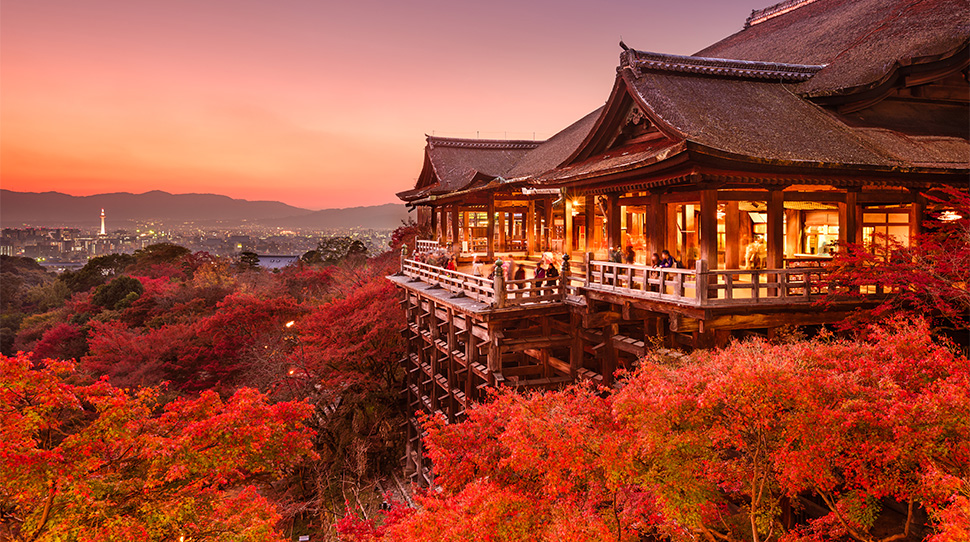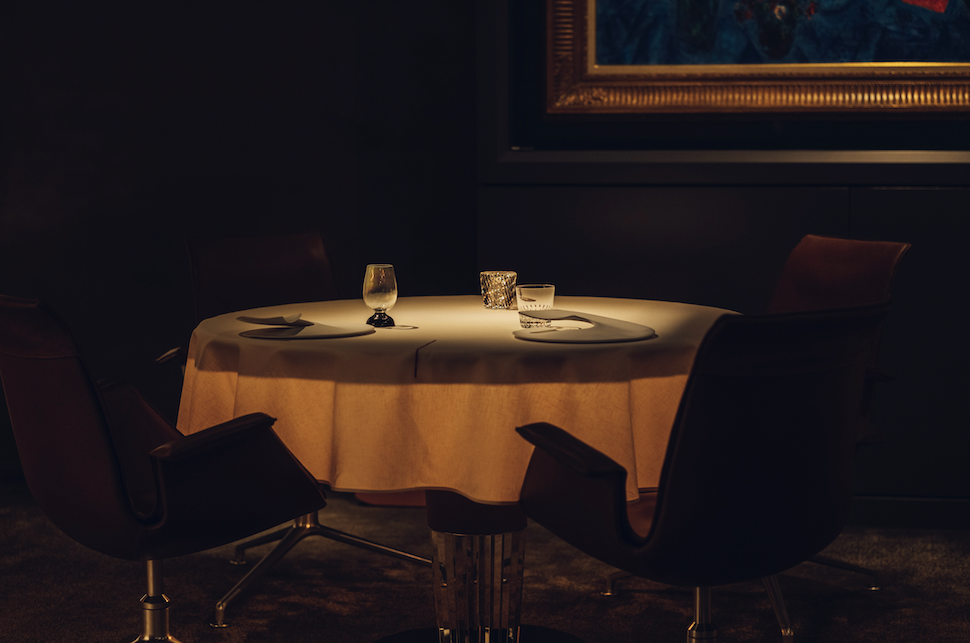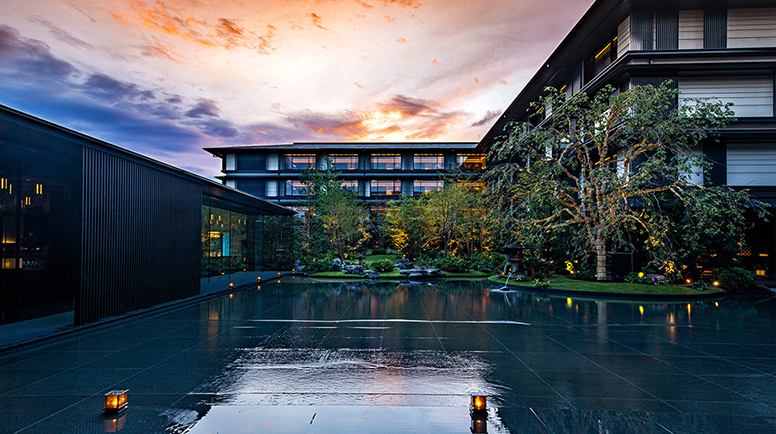

For more than a thousand years, Kyoto was the seat of the ruling emperor of Japan. Today it is one of the largest cities in the country and one of the most incredible regions to visit for its rich historical and cultural significance.
And while the destination certainly stands tall on its own compared to the urban bustle of larger cities like Tokyo or Osaka, its high concentrations of haute cuisine restaurants — including traditional Japanese kaiseki, modern fare, Italian and French dining — shines.
One such restaurant is Muni Alain Ducasse, where the elegance and cuisine of French chef Alain Ducasse come together with locally sourced Japanese ingredients to create a fine dining experience worth traveling to Kyoto for. Luxury boutique hotel Muni Kyoto (where Muni Alain Ducasse, the more casual Muni La Terrasse and the bakery Muni La Boutique all reside) sits on the shores of the Katsura River and offers an impressive view of the Arashiyama Mountains and the historic Togetsukyo Bridge and is a short walk to the famed Arashiyama Bamboo Grove.

To get a taste for the city’s dining scene, we sat down with the people who’d know the area food scene best — the talented chefs and hospitality team at Muni Kyoto. A mix of locals from the Kansai region and others who came by way of other renowned restaurants, the crew couldn’t wait to share its favorite places to eat.
Hiroyuki Fukutomi, maître d’hôtel and chef sommelier for Muni Kyoto, grew up in nearby Osaka and recommends Oryori Hayashi for a classic kaiseki tasting menu experience with a noteworthy sake list. Or for something more casual, Igarashi in the Gion district serves a kaiseki tasting menu, à la carte selections and a large variety of Japanese wine and sake.
General manager Antoine Juhué hails from northern France. His extensive background in hospitality took his career from Normandy to Paris, then to Esterre at Forbes Travel Guide Five-Star Palace Hotel Tokyo before leading him to Kyoto. On days off, Juhué heads to “a very nice Chinese restaurant named Taiho next to Nijo station. Everything is homemade, and the flavors are very classic but paired with strong and interesting wines.” Another favorite is Moko, which serves classic French cuisine using Kyoto ingredients in a restored traditional machiya-style home.

Alessandro Guardiani, executive chef at Muni Alain Ducasse, learned to make pasta with his mother and grandmother, a family activity that would spark a culinary path that took him to Five-Star Hôtel de Paris Monte-Carlo in Monaco, Five-Star The Dorchester in London and Restaurant le Meurice Alain Ducasse at Five-Star Le Meurice in Paris before Muni Kyoto. In Kyoto, he recommends Muraji: “It’s a chicken ramen restaurant, something a little different from the usual ramen.” He also suggests Toku Yakiniku, a yakiniku (a Japanese barbecue restaurant) in the popular Gion area with high-quality beef. For drinks, he points to Bee’s Knees bar in the buzzing Kiyamachi district with a speakeasy vibe and some of the best cocktails in Asia.
Kaori Matsui, assistant director of food and beverage, likes Kagura for “elevated, but casual izakaya with very good food and drinks — especially sake” or Toki at Five-Star HOTEL THE MITSUI KYOTO, A Luxury Collection Hotel & Spa for French cuisine inspired by the region’s water.
Executive sous chef OhJun Kwon, a Korean-Canadian who has spent time in kitchens with Daniel Boulud, Marcus Wareing and now Ducasse, suggests Oryouri Koshino,a local but upscale izakaya with tatami and counter seating and a good sake list. For some informal food fun, he enjoys Shake Shack for stateside chain’s local specials, like the Uji matcha shake and the Kyoto Cookie Crete frozen custard. Another casual pick is Pizzeria Del Popolo a Kyoto. “Popolo is a nice, small restaurant,” Kwon says, “the owner is Japanese and learned how to make pizza in Napoli. He does very good pizza, Naples-style, and the pistachio pizza is what I always get.”
Muni Kyoto sous chef Yuki Yamamoto was inspired at an early age by fishing and cooking with his grandparents. The chef, who trained in France and then worked at the InterContinental Osaka and Dominique Bouchet in Ginza before returning home to the Osaka/Kyoto region, recommends Miyamasou for its focus on ingredients and expression of terroir. This particular ryokan (or Japanese inn) provides a secluded mountain getaway with traditional accommodations and a restaurant inspired by the surrounding nature. The customary kaiseki meal focuses on tsumigusa (or “freshly picked items”) and features seasonal ingredients locally sourced from the nearby mountains and rivers. It’s an authentic taste of Kyoto.
